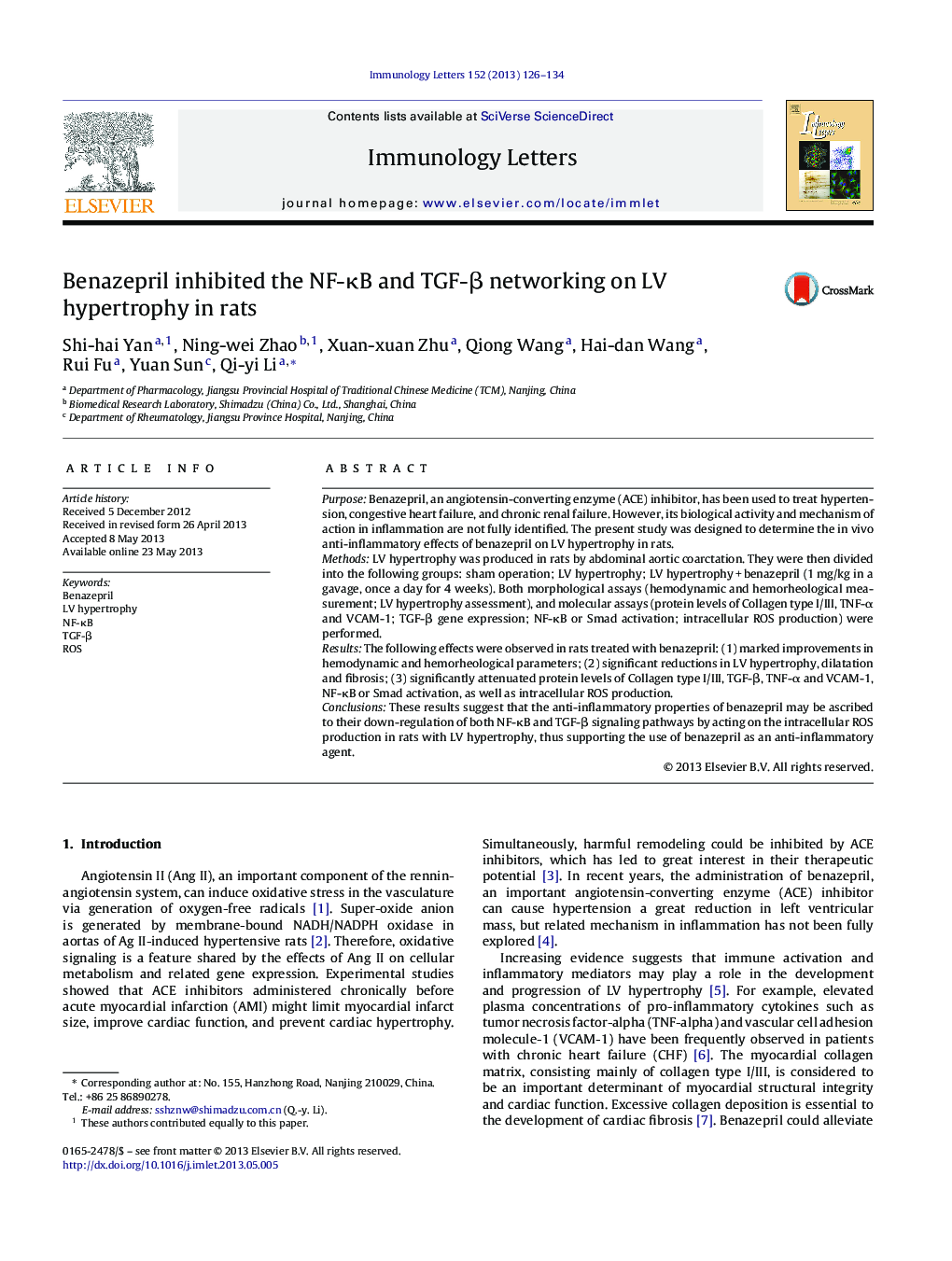| کد مقاله | کد نشریه | سال انتشار | مقاله انگلیسی | نسخه تمام متن |
|---|---|---|---|---|
| 3355534 | 1217189 | 2013 | 9 صفحه PDF | دانلود رایگان |

• The current researchers mainly attributed cardiac cell signaling to a transcription factor, NF-κB.
• NF-κB alone might not fully illustrate the cardio-protective effects of benazepril, while TGF-β might be concerned.
• Benazepril administration abrogated NF-κB controlling protein levels of VCAM-1 or TNF-α.
• Benazepril administration also abrogated TGF-β controlling protein levels of collagen type I/III.
• Benazepril might down-regulate both NF-κB and TGF-β signaling pathways by acting on the intracellular ROS production.
PurposeBenazepril, an angiotensin-converting enzyme (ACE) inhibitor, has been used to treat hypertension, congestive heart failure, and chronic renal failure. However, its biological activity and mechanism of action in inflammation are not fully identified. The present study was designed to determine the in vivo anti-inflammatory effects of benazepril on LV hypertrophy in rats.MethodsLV hypertrophy was produced in rats by abdominal aortic coarctation. They were then divided into the following groups: sham operation; LV hypertrophy; LV hypertrophy + benazepril (1 mg/kg in a gavage, once a day for 4 weeks). Both morphological assays (hemodynamic and hemorheological measurement; LV hypertrophy assessment), and molecular assays (protein levels of Collagen type I/III, TNF-α and VCAM-1; TGF-β gene expression; NF-κB or Smad activation; intracellular ROS production) were performed.ResultsThe following effects were observed in rats treated with benazepril: (1) marked improvements in hemodynamic and hemorheological parameters; (2) significant reductions in LV hypertrophy, dilatation and fibrosis; (3) significantly attenuated protein levels of Collagen type I/III, TGF-β, TNF-α and VCAM-1, NF-κB or Smad activation, as well as intracellular ROS production.ConclusionsThese results suggest that the anti-inflammatory properties of benazepril may be ascribed to their down-regulation of both NF-κB and TGF-β signaling pathways by acting on the intracellular ROS production in rats with LV hypertrophy, thus supporting the use of benazepril as an anti-inflammatory agent.
Journal: Immunology Letters - Volume 152, Issue 2, May 2013, Pages 126–134